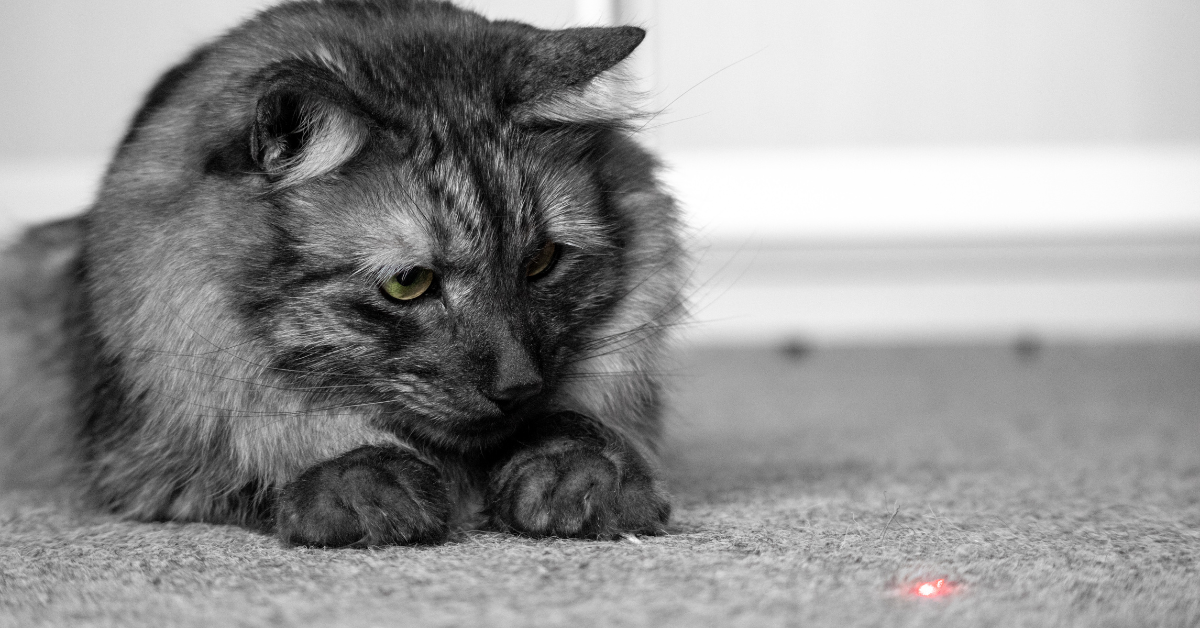It’s pretty easy to tell if a cat is smart. Most intelligent cats can remember their name when called, greet their owners upon arrival, survive a couple of hours independently, learn basic tricks, and effectively emote their moods. While we may have this mental image of cats only being concerned with sunning themselves on the windowsill or occasionally climbing a cat tree, some want more from their lives. It may strike you as strange to imagine your cat playing fetch or walking by your side on a leash, but you’d be surprised how many cats love doing these things.
The reason for this is simple: cats are a very smart species! Their brain structure resembles that of some of nature’s most intelligent animals (including humans). However, that’s not to say that cats will always be able to school their neighborhood pooch. Just like with any other species, some cat breeds are smarter than others. Below, you’ll learn more about eight of the most clever cat breeds around.
The Eight Smartest Cat Breeds
Abyssinian
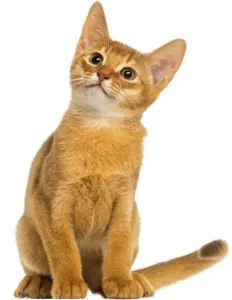
Regardless of whether they’re the purry pals of Ramses II or Queen Victoria, one thing is for sure: these are some wickedly smart cats. Abyssinians are among some of the most naturally curious and independent cats out there. Once they’ve decided to pursue something that’s piqued their interest, there’s no stopping them. This same intense inquisitiveness can also lead to them making a fool of themselves in front of you, which can be highly entertaining.
If you’re going to own an Aby, you’ll want to keep their highly active brains and bodies stimulated, or else risk them getting restless. Pairing them with another Abyssinian or giving them lots of puzzle toys to play with are easy ways to keep their minds busy. But don’t worry – your Aby isn’t going to be too busy thinking to give you some love. In reality, they’re some of the cuddliest cats around, too!
Bengal
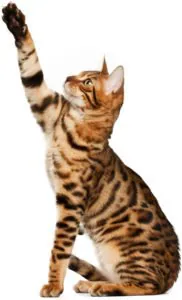
Bengals’ high degree of intelligence also makes them highly trainable, with some Bengal owners reporting that they’ve been able to teach their cats basic commands including “sit” and “stay”. This can also be a double-edged sword, as some Bengals have even been reported to learn how to open doorknobs or turn on the faucet just by watching their humans do those things. However, these kinds of annoying behaviors aren’t something you have to worry about so long as you keep their brains occupied.
Another area where Bengals like to flex their superior IQ is hunting. Due to their wild backgrounds, Bengals are extraordinarily efficient at both hunting small creatures and fishing. This may be a behavior that you want to tamp down on quickly, as this is not a behavior that your Bengal will easily unlearn. In order to curb this behavior, try introducing your Bengal to small animals and fish frequently while they’re still kittens.
Cornish Rex
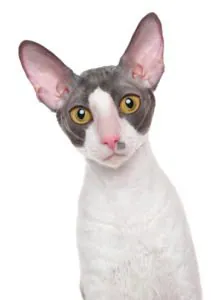
The breed is also renowned for its affability with both children and other pets, making them great family pets. However, Cornish Rex cats aren’t going to be happy if they feel like they’re just a pick of the litter housecat; they crave one-on-one time with their humans. So, if you intend on getting one, make sure you’re giving them plenty of space to run, jump, and climb as well as plenty of cuddles to enjoy.
Singapura

Sometimes referred to as “little lions of love”, the Singapura often wants to be in the middle of whatever it is their family is doing – every activity is an opportunity to play, after all. Additionally, every new item that comes across their saucer-like eyes is an item that’s ripe for keen inspection…and playing with. That means any unimportant objects you might use once in a blue moon, such as pens, a computer keyboard, your shoelaces, or kitchen utensils are all fair game for them to become intrigued by and tamper with.
With their insatiable curiosity evident, consider keeping your Singapura’s little head busy by teaching them tricks or providing them with puzzle toys that reward them for each successful attempt.
Korat

This is probably because Korat’s are especially observant cats, often employing a “watch, then do” approach to everything. So, don’t be surprised if you come home to find your Korat opening containers or trying to unlock a door! However, Korats’ fondness for closeness also means that they’re not very keen on being left alone. In fact, their observational nature lets them quickly pick up which tactics gain them the most attention for the longest amount of time. Once they have your attention, they’ll also jump at any opportunity to play and express great interest in whatever toys are in front of them. So, we’re not saying that Korats are master manipulators, but they sure do know what tricks keep us wrapped around their little paws!
Burmese

Like dogs, Burmese cats are uniquely equipped to learn tricks (which they enjoy thanks to the additional attention it brings them), with some being able to learn how to sit, roll over, fetch, and walk on a leash. However, not all Burmese cats are the same! Male Burmese cats tend to be a bit more demure in their personality, while females are much more openly demanding of their owners’ attention. Nonetheless, both sexes of the Burmese breed are curious animals who thrive when given proper mental stimulation.
Scottish Fold

Scottish Folds love being as close to the action as possible, often closely following behind their humans as they walk around the house. Unlike many breeds, Scottish Folds are uniquely adaptable to changes in their environment, making them well-suited to homes that are planning to introduce other cats or young children to the house. The Scottish Fold also loves to learn tricks that will keep its humans entertained and amused, such as opening doors or playing fetch. Don’t worry about them becoming pests for attention, either – Scottish Folds are still cats, and they enjoy regularly exercising their independence. However, once they’ve decided to come back after an afternoon of sleuthing, they’ll be all over you. Enjoy!
Siamese

They are also quick to boredom, which can lead to unwanted destruction if you’re not careful. Luckily, you can avoid having them come up with their own entertainment by training them or providing puzzle toys to keep their minds busy. Getting them a companion (like another Siamese cat) is also a good way to keep them from feeling bored or, worse, lonely. Siamese cats are especially social creatures, so you don’t want to leave them alone for too long or else they can quickly become distressed. If left alone for too long, you may come back to find your faucet running, your cabinets swung wide open, or your toilet roll cut to pieces!
“Well, that’s great,” you might say to yourself, “but cat isn’t any of these breeds! Is she just destined to be my little dope forever? Or can I train her to be more intelligent?”
How To Train Your Cat’s Brain
As any animal ages, their brain functions begin to naturally decline. This process is accelerated when the animal lives in an environment that isn’t mentally and physically stimulating. As cats reach old age, they can develop a disorder known as feline cognitive dysfunction (FCD): a cat version of Alzheimer’s disease. Cats with FCD can begin displaying a variety of troubling symptoms, including acting disoriented, missing the litter box, and even rejecting affection.
Unfortunately, once FCD strikes there’s no curing it. That’s why it’s critically important to begin focusing on amping up your kitty’s brain health long before FCD has its chance. With that in mind, here are just a few ways you can help keep your cat’s brain sharp.
Give Them a Puzzle
It’s been shown that having pets complete problem-solving activities has dramatically slowed down mental decay. Luckily, there are toys on the market that both enrich your cat’s brain while filling their bellies: food puzzles. The idea behind these toys is that they force your pet to use their brains in order to access the reward inside.
Food puzzle toys are available for purchase in a whole assortment of shapes and sizes. A common example of a food puzzle is The Kong, which is a rubber shape that has a hollowed out cavity where you can stuff food into. You can also turn every mealtime into a puzzle by buying a puzzle feeder. Popular among dogs and cats who are ravenous while they feed, these bowls and dishes often have raised obstacles on their feeding surface in order to force the pet to tease out bits of kibble. If you’d rather keep things low-cost, you can even create a puzzle for your cat by simply dispersing their kibble in the grass! This achieves the same goal as the puzzle feeders while also getting your cat outdoors and mobile!
Play With Them

For example, while most of us have probably used the dangling feather toy to laugh at our cat, these toys are actually incredibly useful for stimulating their brain. Not only will they expend some calories trying to catch the feather, but they’ll also have to figure out how to actually catch the feather. It helps their minds and body stay active, all while strengthening their innate hunting instincts. Sounds like a win to us!
Speaking of stimulating their hunting instincts, have you ever considered letting your cat hunt you? Okay, maybe not the best wording, but have you ever thought about how mentally taxing a game of hide and seek is? Well, your cat sure knows! In order to find their prey in the wild, cats would have to think about where their prey might hide and then carefully scope out those locations without alerting anyone.
There’s no reason they can’t replicate this experience in the comfort of their own home, so consider incorporating short games of hide and seek into your play routine. However, remember that you have to remind your cat it’s a game and that you haven’t actually disappeared. Make sure to continue calling out to them so they can hear your voice, and eventually they’ll get the hang of it.
Also, we know that it’s a common belief that cats mix with water about as well as oil does, but this isn’t a universal rule by any means. In fact, some cat breeds tend to love playing in and with water. If your cat loves splishing and splashing around, here’s a fun game for you to try: fill up a large bowl with colorful marbles and then place some ping pong balls on the top of the water. Your cat may become fascinated by the shiny balls at the bottom and will work to fish them out without getting too wet.
However you choose to play, it’s important to remember that the most important thing is to keep playing as part of your cat’s normal routine in order to keep them active into their later years.
Keep Their Bodies Active

Finally, you may even want to explore taking your cat for a walk! Some cats are going to be more enthusiastic about donning a leash than others, but there’s nothing to worry about. If your cat simply refuses to step foot outside in that thing and you have a backyard, get them to come out in the yard with you! Even just leading them around by dropping treats behind you for 15 minutes everyday can do wonders for keeping them active.
We know that most cats are pretty particular about their behavior, but we promise that the tips above should capture their attention without too much trouble. So, next time you’re thinking about just letting Whiskers hang out all day for the 117th day in a row, consider spending just a little time engaging them and their brains. In the end, you’ll be rewarded with a cat whose mind has aged wonderfully and who’s just as willing and capable of chasing the feather as they were when they were younger.
Whether your cat is the Feline Einstein or they forget their own name, we know that you love them dearly and would do anything to keep them and their brain happy and healthy. We hope you found this article helpful and if your dog ever gets any cuts, abrasions, ear infections or ringworm, we hope you keep Banixx Pet Care in mind.
Sources
- https://www.nationalgeographic.com/news/2017/11/dog-cat-brains-neurons-intelligence-study-spd/
- https://cattime.com/cat-breeds/bengal-cats
- https://www.thesprucepets.com/learn-all-about-the-cornish-rex-cat-4694497
- https://www.catster.com/lifestyle/cat-breeds-cornish-rex-personality-ballet-dancer-body-pictures-photos
- https://cfa.org/korat/korat-article/
- https://cattime.com/cat-facts/1324-smartest-cat-breeds
- https://www.petmd.com/cat/breeds/c_ct_burmese
- https://www.youtube.com/watch?v=kDolQlZWSmw
- https://www.vetstreet.com/dr-marty-becker/is-your-kitty-confused-4-signs-of-cognitive-dysfunction-syndrome
- https://www.petfinder.com/cat-breeds/collections/why-cats-love-water-cat-breeds-that-like-water/
- https://www.mentalhealth.org.uk/publications/how-to-using-exercise
- https://banixx.com/blog
Share this Post
Featured Post
Recent Posts
Lipomas….mysterious Lumps & Bumps on your pup…When should I worry? What should I do about them?
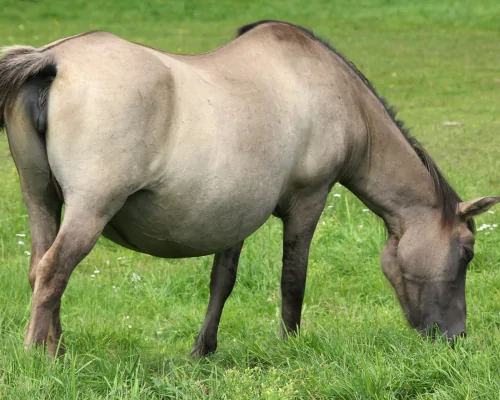
Managing the Mamas –Part 2 –The development process
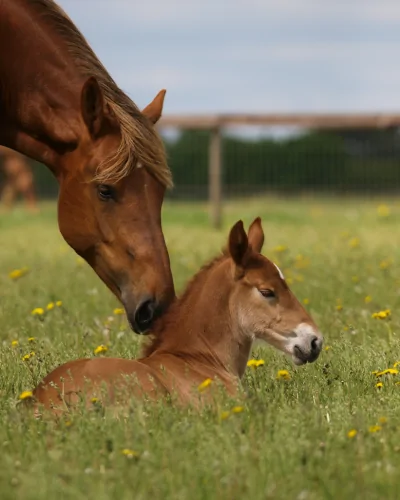
Managing the Mamas: Part 1 – Preparing to Breed Your Mare

HOW MANY TOES?? Caring for the Polydactyl Cat

Do Dog Joint Supplements Actually Work?
